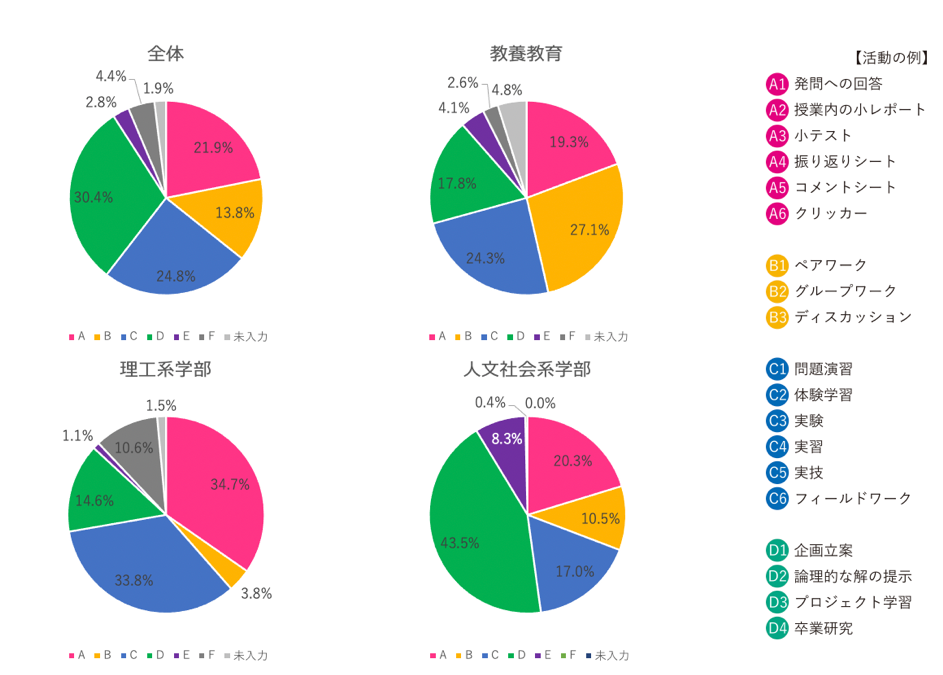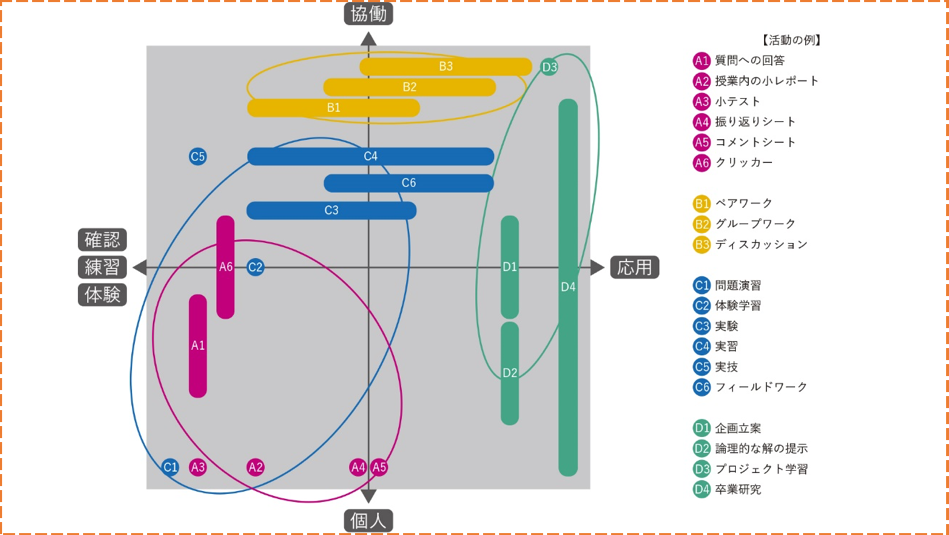Nagasaki University is promoting active learning (independent learning). More than 90% of the liberal arts education subjects are designed with active learning in mind.
By the way, active learning has the image of group work and discussions, but at our university, it has become widespread in a way that suits the purpose of the lessons.
For example, in liberal arts education, the ratio of “activities involving others to think from multiple angles” such as “pair work, group work, discussion” is high, but in the Faculty of Science and Technology, “answers to questions, quizzes, quizzes” There is a high percentage of “activities that confirm the degree of understanding of the lesson content and make people think for themselves” and “activities that are practiced to acquire skills” such as “problem-solving and hands-on learning”. , “Activities that comprehensively utilize knowledge to solve problems” such as “planning and graduation research” are high.
Are the abilities and attitudes cultivated at the university really utilized even after graduation? Nagasaki University asks graduates and various companies to cooperate every three years, and conducts graduation surveys and company surveys. This is useful for examining whether the education at Nagasaki University is really meaningful and whether there is anything that needs to be improved.
It is clearly stated in the syllabus which class has what kind of active learning promotion method, so be sure to check before taking the class.
A. Activities to check the degree of understanding of the lesson content and make them think for themselves
(Answer to questions, small reports in class, quizzes, reflection sheets, comment sheets, clickers, etc.)
B. Activities that involve others to think from multiple angles
(Pair work, group work, discussion, debate, etc.)
C. Activities to practice for skill acquisition
(Problem exercises, experiential learning, experiments, practical training, practical skills, fieldwork, etc.)
D. Activities to comprehensively utilize knowledge for problem solving
(Planning, presentation of logical solutions, project learning, graduation research, etc.)
E. Class methods that encourage students to activate their thinking other than the above
F. Consists of lectures from teachers only




